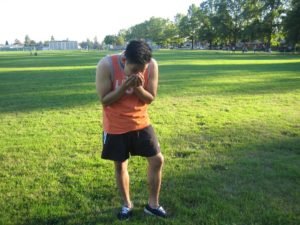The exercise-induced allergic reactions can manifest throughout or afterwards physical activity. It is important to note that exercise is capable of triggering the following:
https://www.youtube.com/watch?v=aa2E0mAi1gg
- Asthma – exercise often instigates an asthma attack among those who have asthma but some individuals have asthma only during physical exertion. Remember that exercise might trigger or aggravate the condition since rapid breathing cools and dries the airways and when they warm again, they constrict.
- Anaphylactic reactions – in rare cases, engaging in strenuous exercise triggers a systemic potentially severe reaction. In some, this reaction only occurs if a specific food is eaten before exercising.
In most cases, the symptoms instigated by exercise such as asthma or anaphylactic reaction occur after 5-10 minutes of strenuous exercise. Oftentimes, the symptoms start after exercise has been stopped.
How is it diagnosed
A diagnosis of exercise-induced allergic reaction is usually based on the symptoms and connection to exercise.

An exercise challenge test can be used by the doctor to come up with a diagnosis. During this test, the lung function is assessed before and after activity on a stationary bicycle or treadmill.
Management of exercise-induced allergic reactions
Among those who have exercise-induced allergic reactions, specifically asthma, the objective of treatment is to be able to exercise without triggering any symptoms. Being more physically fit can make the symptoms less likely to develop while exercising.
The inhalation of beta-adrenergic drug about 15 minutes before starting a workout routine is often useful in preventing the reactions. Take note that cromolyn which is usually used via an inhaler can be useful.
Among those who are diagnosed with asthma, using medications that are used to control asthma can prevent symptoms from developing during exercise. In some cases, using drugs to manage asthma and gradually increasing the duration and intensity of activity will allow the individual to tolerate exercise.
Individuals who experienced an exercise-induced anaphylactic reaction must avoid the exercise that instigated the attack. If the consumption of an exact food prior to exercise initiates the symptoms, it should not be eaten before physical activity.
Remember that a self-injectable epinephrine must be on hand at all times for prompt treatment in case of severe reactions. If exercise could not be avoided, it is best to exercise with others.
